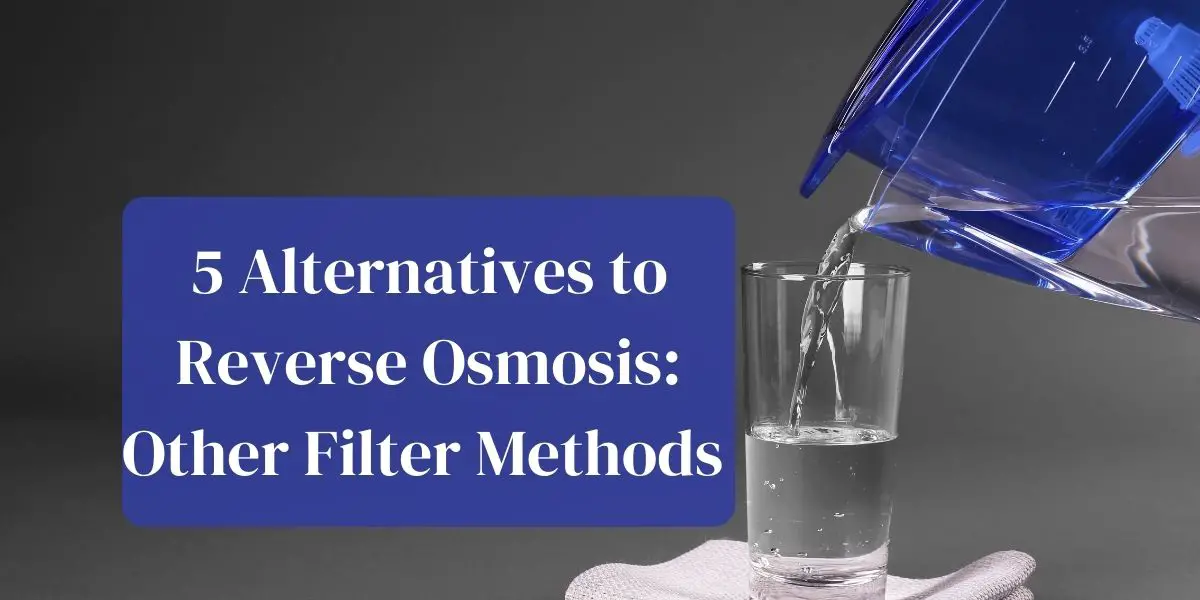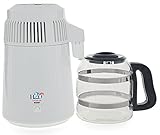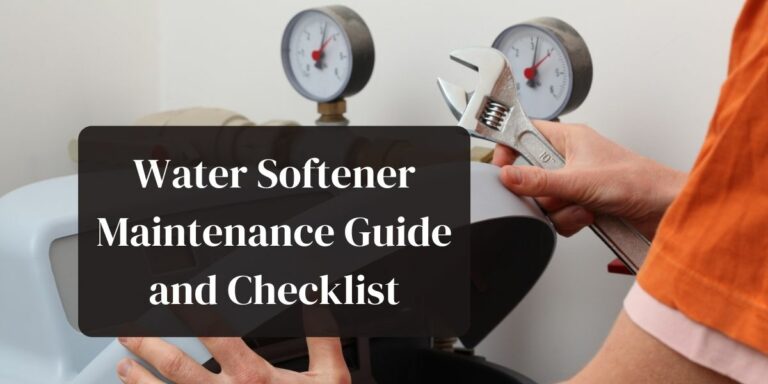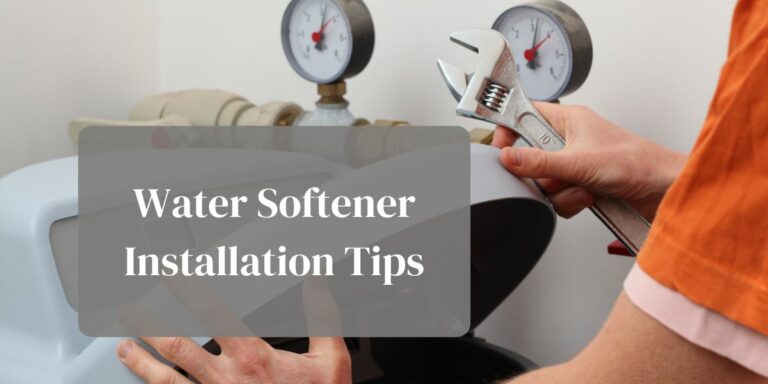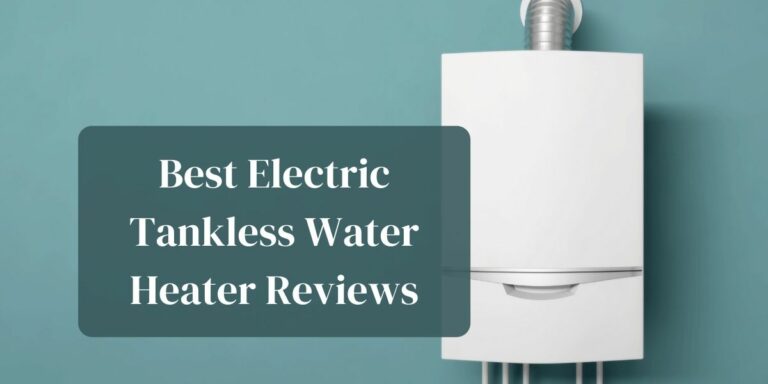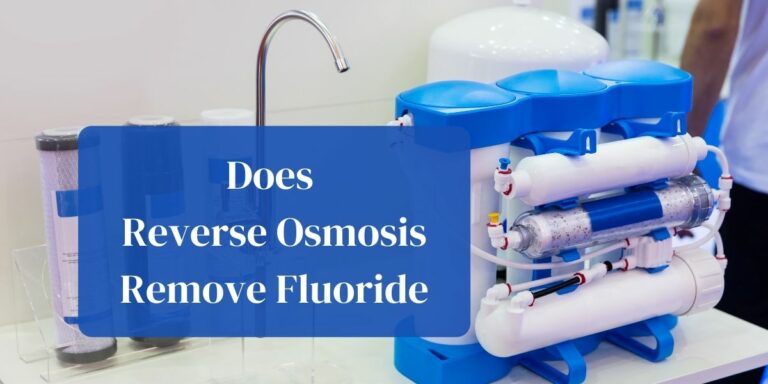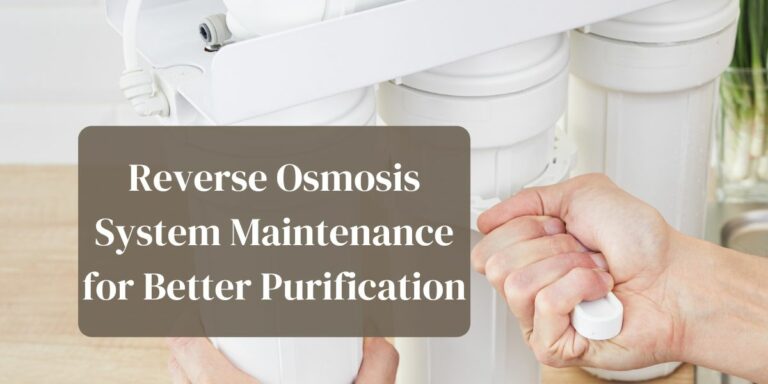Reverse osmosis is a water purification process that uses a special semi-permeable membrane to eliminate ions, unwanted molecules and other larger impurities from drinking water. While this semi-permeable membrane filtration method is effective and has many advantages, many people are now looking at alternatives to reverse osmosis.
The reason why people look for alternatives to reverse osmosis is that the purification method removes everything, including some helpful compounds. Reverse osmosis is also a filtration method that can waste water.
So, which is the best reverse osmosis alternative on the market today? Well, we have come up with these options.
Table of Contents
- 5 Alternatives to reverse osmosis systems
- When is reverse osmosis water necessary?
- Do you need to replace filters in all systems?
- Conclusion
5 Alternatives to reverse osmosis systems
There are numerous reverse osmosis alternatives, you simply need to know where to look. Here are some of the most popular and most effective on the current market.
1. Gravity filters
- ENJOY GREAT-TASTING TAP WATER EVERY DAY AT HOME- The 3.25-gallon Royal Berkey System can be used on a countertop in your kitchen or office to transform tap water into delicious drinking water that's also ideal for making your favorite beverages or cooking.
- INDEPENDENT TESTING- Black Berkey Elements (the original BB9-2) are composed of a unique, proprietary blend of multiple media types backed by testing from accredited, third-party labs. Black Berkey Elements remove or dramatically reduce over 250+ typical contaminants that could be present in freshwater sources—no electricity, tools, or plumbing are required.
- INCLUDES AUTHENTIC BLACK BERKEY ELEMENTS (THE ORIGINAL BB9-2)- Don't fall for lookalike filters that use our Berkey BB9-2 model number or trademarks in their titles or product descriptions to legitimize their brand as replacements or "compatible", when they are not. Black Berkey Elements are designed to work synergistically and target specific contaminants that far exceed the reduction capabilities of black filters solely composed of activated carbon.
- ECONOMICAL, LONG-LASTING- Black Berkey Elements provide filtered water for just pennies per gallon. Each pair of Black Berkey Elements lasts for up to 6,000 gallons before replacement is recommended. Elements may require replacement sooner based upon the quality of influent water. Each additional pair of Black Berkey Elements (sold separately) adds an additional 6,000 gallons of contaminant reduction.
- THE GOLD STANDARD IN GRAVITY-FED WATER FILTRATION- Authentic Black Berkey Elements are capable of greater contaminant reduction and a longer lifespan than virtually any of the other filter elements on the market. Berkey systems are simple and easy to use and require no electricity, costly installation, or tools, providing economical, long-lasting water filtration for just pennies a gallon.
Pros
Gravity filters can make it much easier to give you access to clean drinking water. All they filter natural water sources, you can take one of these filters on a hike and get some suitable drinking water from a stream or a lake.
Don’t be fooled though, gravity filters also have a serious capacity and filter out some of the most harmful compounds, ranging from viruses to pesticides and herbicides. Of course, it does all this without compromising on portability.
Most gravity water filters are also easy to clean. Since most of these water filters are made from stainless steel, you can easily clean them out and simply replace the filter as required.
Cons
Compared to pressured water filtration, gravity filters are a little slower. In addition to that, most gravity water systems tend to have a limited water capacity. In other words, most will filter out less than two litres. So, gravity filters are not that great for regular water filtration inside the home. Nevertheless, they are a good alternative to RO water filtration for anyone who likes to go hiking or needs to gain quick access to drinking water outside their home.
2. Water distillers
Pros
Water distillers are a great choice when it comes down to reliable water quality. Even if you use this particular water filter over a longer period of time, a water distiller will perform at its maximum capacity even over a long time.
Another big benefit of water distillers is that you do not have to replace parts. If you do not want to replace your water filter on a regular basis, then water distilling might be the way to go.
Cons
One of the biggest downsides to water distillers is the fact they do not filter out volcanic organic chemicals. The reason for that is the boiling point of volcanic organic chemicals compared to water. Another compound that cannot be filtered for this exact reason is chlorine.
Chlorine is quite the popular chemical in our public water supply. While it does make drinking water safe for consumption, the remaining chlorine does have byproducts that can be harmful for your health.
The final negative is that distilling water systems can be incredibly hot. So, if you use this kind of system in the summer, this water filter can add a lot more heat to your home.
Is bottled water distilled? Get the answer here.
3. Carbon filters:
- SUPERIOR PERFORMANCE: The advance 4-stage design, which includes both Ultrafiltration and KDF/GAC stages, removes up to 99% of chlorine and chlorine treatment by-products, lead, and much more, while retaining minerals. Noted: This system is NOT a Reverse Osmosis water filtration system and does NOT lower TDS.
- 4-Stage ULTRAFILTRATION SYSTEM: PP Sediment Filter (5 microns) removes larger particles like rust, sand, dirt. Ultrafiltration membrane contains hollow fiber membrane technology with a pore size of just 0.01 microns. KDF and GAC Filter provides much better control of particularly problematic contaminants including chloramine, hydrogen sulfide, heavy metals, and other compounds. Fine Activated Carbon Filter provides final polishing.
- SIMPLE AND FLEXIBLE: NO WASTE WATER and No storage water tank required. The CU-A4 provides highly effective water filtration for any number of clean water needs - at the sink, in the refrigerator, for coffee makers and more.
- FEATURES: Come with premium brushed nickel finish drinking water faucet. All filters, tubing and other water-contacting parts are manufactured to comply strictly with NSF/ANSI standards for safety and water quality.
- EASY-TO-INSTALL AND REPLACE FILTER: Push to connect fittings for simplify setup. Filter replacement are designed for ease. No need to disconnect hoses or water lines. Just Twist On / Twist Off filter cartridges make changing filters a snap. Filter life: 6 -12 months, depending on your source water and usage.
Pros
The carbon filter is the most popular filtration system for a reason. The filter can effectively remove odd tastes, odors and chlorine from water. The use of the filter is also a lot less difficult than some other filters, making it less hazardous in daily operation.
It is interesting to mention that the carbon filter can be used in conjunction with other types of water systems and filters. It is also common practice to use a carbon filter with a water softener for better results.
Cons
The biggest downside to carbon filter systems is that they must be replaced on a regular basis. On average, a carbon filter must be changed at least once a year. The carbon filter cannot filter out inorganic compounds and dissolved solids either, in which case reverse osmosis water filtration is required.
4. Countertop water filter:
- DRINK SAFE WATER: Enjoy fresh filtered water with the 10 Stage water filtration system that removes a significant amount of common water contaminants and bacteria found in tap water, including chlorine and lead, to help keep your water safe and clean.
- ELIMINATES CONTAINMENTS: 10 Stage works to eliminate harmful contaminants such as chlorine, trihalomethanes, organic and inorganic arsenic, mercury, lead, pesticides, and herbicides, which contribute to illnesses.
- EASY INSTALLMENT: The space-saving filter quickly and easily attaches to your faucet and allows you to easily change between tap water and filtered water as needed. It delivers odorless, great-tasting water at your kitchen sink.
- ENVIRONMENTALLY RESPONSIBLE: By using a kitchen water filter at home, you can save money on water bottles and you can help eliminate the amount of plastic water bottles being used.
- NEW WAVE ENVIRO: New Wave is a family-owned company based in sunny Colorado. Their Enviro Products are designed to inspire and support healthy, active living.
Pros
Countertop water filters are some of the easiest to install inside the home. They are quite beneficial for smaller households and perfect for anyone who is on a bit of a budget.
Another big benefit of the countertop water filter is that it does not require any massive installations or an additional tap. Its maintenance is also pretty straightforward, as you only need to replace filters every now and again.
Cons
It is worth noting that countertop filters tend to be much smaller than the other options on the market today, this means their output volume may not be meeting the requirements of your household. Some people also find that the countertop system breaks up the design of their kitchen, as this particular model is visible on your kitchen’s countertop.
5. Pitcher filter:
- The BPA-free Grand water pitcher with filter holds 10 cups of water, enough to fill 3 24-ounce reusable water bottles
- Get great-tasting water without the waste; by switching to Brita, you can save money and replace 1,800 single-use plastic water bottles* a year
- This space efficient Brita pitcher fits perfectly on refrigerator shelves, features an easy-fill locking lid and is easy to pour; Height 10.16"; Width 5.77"; Length/Depth 11"; Weight 2.48 pounds
- Brita is the #1 water filter** reducing chlorine (taste & odor), Mercury, Copper, Zinc and Cadmium; always get cleaner***, filtered water with an electronic indicator that makes filter reminders effortless
- Compatible with Longlast and Standard water filters; for the freshest tasting water, replace your Longlast filter after 120 gallons or approximately every 6 months or Standard filter after 40 gallons or approximately every 2 months; *16.9 oz water;**Based on IRI data;***vs. tap
Pros
This type of filtration works on a percolation principle and lets the water run through a special charcoal filtration net. These are remarkably common and you can find them on many kitchen counters.
Pitchers are quite common and eliminate quite an amount of impurities. They are inexpensive and fairly easy to acquire.
Of course, they are very different to other systems mentioned here today. Contrary to other systems, they are not connected to your water supply directly. On the flipside, this means there is some manual interference involved. Of course, some people prefer not to have anything installed on their water systems.
Cons
While you can remove some impurities with pitchers, take into account that 20% to 51% of harmful contaminants can be left in your water supply; this according to a study conducted by the Arizona Laboratory for Emerging Contaminants. The level of contaminants remaining depends on the brand of pitcher you acquire.
The research also showed another problematic fact. Some brands of pitchers can actually introduce contaminants in the water, opposed to removing them. Therefore, it is necessary to do sufficient research into your pitcher brand before acquiring it.
When is reverse osmosis water necessary?
We already touched upon the subject of reverse osmosis in the introduction of this article. To understand why reverse osmosis is required, we need to look at how the filtration method works.
Reverse osmosis, often abbreviated to RO, uses a special membrane to remove impurities from water. This membrane is semi-permeable, this means particles of a certain size will not be allowed to pass through the membrane and be successfully removed from the drinking water.
Surprisingly, the principle of RO has been around for quite a long time. In fact, the semi-permeable membrane and its application in osmosis was observed as early as 1748 by Jean-Antoinette Nollet. However, detailed research was not done into the principle until the 1950’s.
Within the RO System, a distinction can be made between a solvent stream and a solute stream. Depending on the application, one of these two streams will be considered as a waste stream. In case of water treatment, the solute stream is considered to be waste, where the solvent stream is the purified water.
However, this can be the other way around for applications such as food processing. Of course, this fact is only of limited use to us in this framework. The most important thing to remember is that there is always a waste stream with reverse osmosis techniques.
RO systems have many applications in this world. After all, RO water filtration allows you to easily remove bacteria and parasites from water when you are out and about. It is a great system for anyone who finds themselves hiking on a regular basis and needs easy access to a solid and good water supply.
Of course, osmosis water and RO systems are not perfect. For example, reverse osmosis water often lacks iron, calcium, magnesium, fluoride and other helpful minerals that actually promote good health.
On the flipside, they do remove pesticides and herbicides effectively, and can therefore be used in households with a water supply that is subject to these specific types of impurities. It all depends on the area you live in.
Some areas in the United States have a ground water supply that are filled with residual pesticides and herbicides. For these locations, it is often better to obtain reverse osmosis systems for their home opposed to other types of filters.
In other words, there are some instances where reverse osmosis water can be beneficial for a household and where such a system could be installed for permanent use. However, homeowners that do have a reverse osmosis water filtration should take into account the lack of minerals in their water supply.
Do you need to replace filters in all systems?
Not all systems require you to change your water filters. In fact, some of them come without removable parts, which means you do not have to worry about filters at all. Of course, the large majority of households have a water filtration system that does require these filters and subsequent replacement.
So, how do you know when to replace your filters? Well, there are a couple of indicators you can look for to ensure your filters perform at maximum performance.
Your first point of reference is always the manufacturer. If you have a filtration system or something as simple as the pitcher, the user manual should always include how often you should change the filters. In most cases, filters should be replaced between six and twelve months.
Of course, the recommended time from the manufacturer is not the only thing to take into account. Sometimes, there are variables that can shorten or increase the lifespan of your filters. These variables include but are not limited to water quality, temperature and water pressure.
When you use a filtration for the first time, it can be a good idea to keep a close eye on your filters. Check for visible signs of wear and tear, but you can also test the water to see how effective your filters are after a certain period of use. The latter is still the most effective way to determine the best time to replace the filters in you water systems.
Conclusion
There is quite a range of filters available these days, all with their own set of pros and cons. Choosing the best filters comes down to researching the water you need to remove contaminants from. For example, if you need to remove impurities from outdoor water on a hike, the reverse osmosis system might be most effective. On the other hand, other filters might be more useful if you need filtration for your home.
If you need filtration for your home, then check the impurities in your household’s water first. If there is a large amount of pesticides and herbicides, you will need a different system than someone who is looking to remove chloride for example.
Of course, budget does play a role when you select filtration systems. However, it should not be the most important factor. After all, you cannot compromise on quality for the sake of getting a cheaper deal. Instead, look for that perfect combination of value and performance to get the best filtration for your home.
This article has shown the biggest benefits of filtration, but also some of the biggest downsides. With this overview in hand, it will become much easier to choose filtration that matches your home and your personal situation. In addition to that, you also saw a good overview of reverse osmosis and how you should use this filtration method. Now, you are ready to make the right filtration choices for yourself and your family.

